Peach blossom and the surrounded monastery
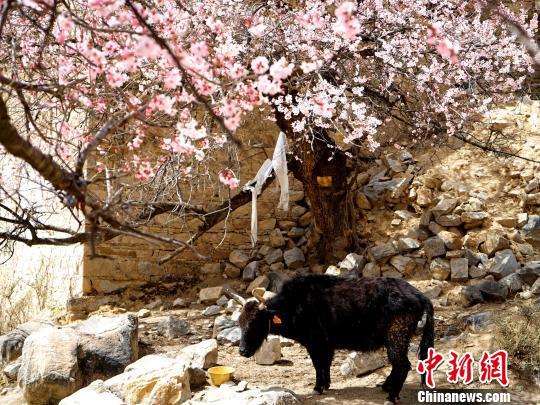
Photo shows peach blossom are in full bloom beside the Phabongkha Monastery sat on the mountains in northern suburbs of Lhasa, capital city of southwest China's Tibet, in the middle of April. Among the more than one hundred peach blossom trees around the monastery, many are hundreds of years old. Phabongkha means "palace on huge rocks" in Tibetan language. With an altitude of about 3,900 meters, one can take a bird's-eye view of the Potala Palace in the Phabongkha Monastery, which is believed to be the place where Tome Sambozha has created the Tibetan language according to record in texts of Tibetan Buddhism. [Photo/China News Service]
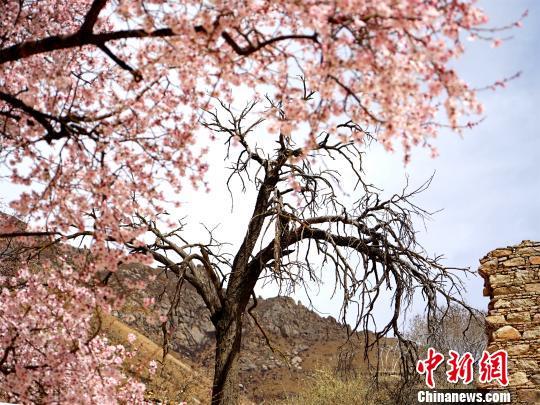
Photo shows peach blossom are in full bloom beside the Phabongkha Monastery sat on the mountains in northern suburbs of Lhasa, capital city of southwest China's Tibet, in the middle of April. Among the more than one hundred peach blossom trees around the monastery, many are hundreds of years old. Phabongkha means "palace on huge rocks" in Tibetan language. With an altitude of about 3,900 meters, one can take a bird's-eye view of the Potala Palace in the Phabongkha Monastery, which is believed to be the place where Tome Sambozha has created the Tibetan language according to record in texts of Tibetan Buddhism. [Photo/China News Service]
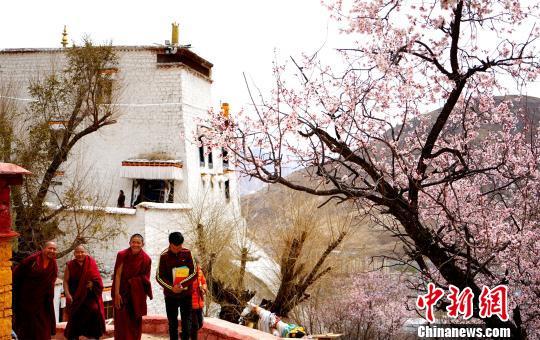
Photo shows peach blossom are in full bloom beside the Phabongkha Monastery sat on the mountains in northern suburbs of Lhasa, capital city of southwest China's Tibet, in the middle of April. Among the more than one hundred peach blossom trees around the monastery, many are hundreds of years old. Phabongkha means "palace on huge rocks" in Tibetan language. With an altitude of about 3,900 meters, one can take a bird's-eye view of the Potala Palace in the Phabongkha Monastery, which is believed to be the place where Tome Sambozha has created the Tibetan language according to record in texts of Tibetan Buddhism. [Photo/China News Service]

Photo shows peach blossom are in full bloom beside the Phabongkha Monastery sat on the mountains in northern suburbs of Lhasa, capital city of southwest China's Tibet, in the middle of April. Among the more than one hundred peach blossom trees around the monastery, many are hundreds of years old. Phabongkha means "palace on huge rocks" in Tibetan language. With an altitude of about 3,900 meters, one can take a bird's-eye view of the Potala Palace in the Phabongkha Monastery, which is believed to be the place where Tome Sambozha has created the Tibetan language according to record in texts of Tibetan Buddhism. [Photo/China News Service]
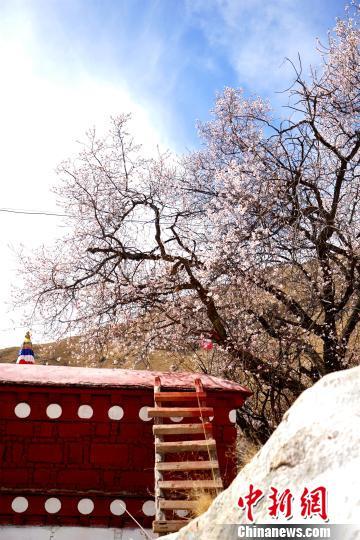
Photo shows peach blossom are in full bloom beside the Phabongkha Monastery sat on the mountains in northern suburbs of Lhasa, capital city of southwest China's Tibet, in the middle of April. Among the more than one hundred peach blossom trees around the monastery, many are hundreds of years old. Phabongkha means "palace on huge rocks" in Tibetan language. With an altitude of about 3,900 meters, one can take a bird's-eye view of the Potala Palace in the Phabongkha Monastery, which is believed to be the place where Tome Sambozha has created the Tibetan language according to record in texts of Tibetan Buddhism. [Photo/China News Service]
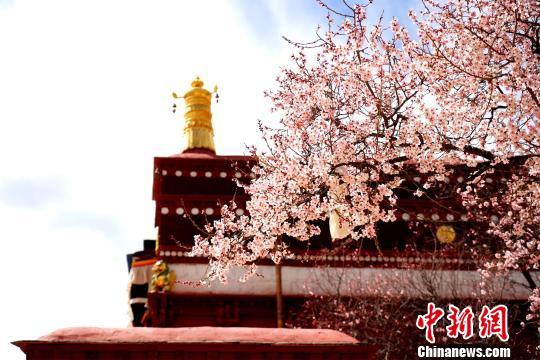
Photo shows peach blossom are in full bloom beside the Phabongkha Monastery sat on the mountains in northern suburbs of Lhasa, capital city of southwest China's Tibet, in the middle of April. Among the more than one hundred peach blossom trees around the monastery, many are hundreds of years old. Phabongkha means "palace on huge rocks" in Tibetan language. With an altitude of about 3,900 meters, one can take a bird's-eye view of the Potala Palace in the Phabongkha Monastery, which is believed to be the place where Tome Sambozha has created the Tibetan language according to record in texts of Tibetan Buddhism. [Photo/China News Service]
Editor: Tommy Tan.
Your Comment
Name E-mailRelated News
More >>-
;
-
-
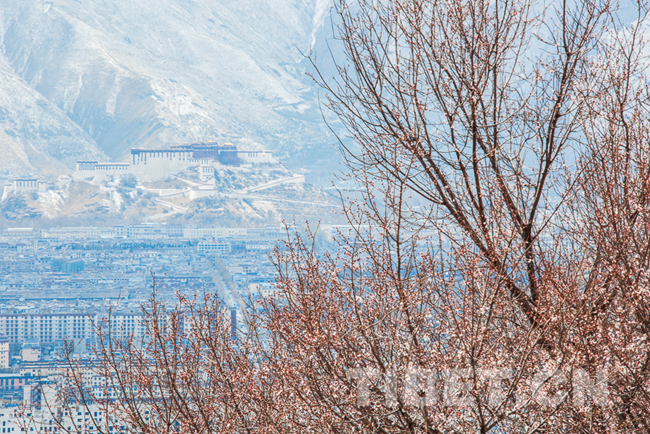
-
Scenery of snow-covered peach blossom in Lhasa
Photo shows the scenery of peach blossoms in front of the Potala Palace in Lhasa, capital city of southwest China's Tibet after a snowfall arrives in the city recently.
-
-
-
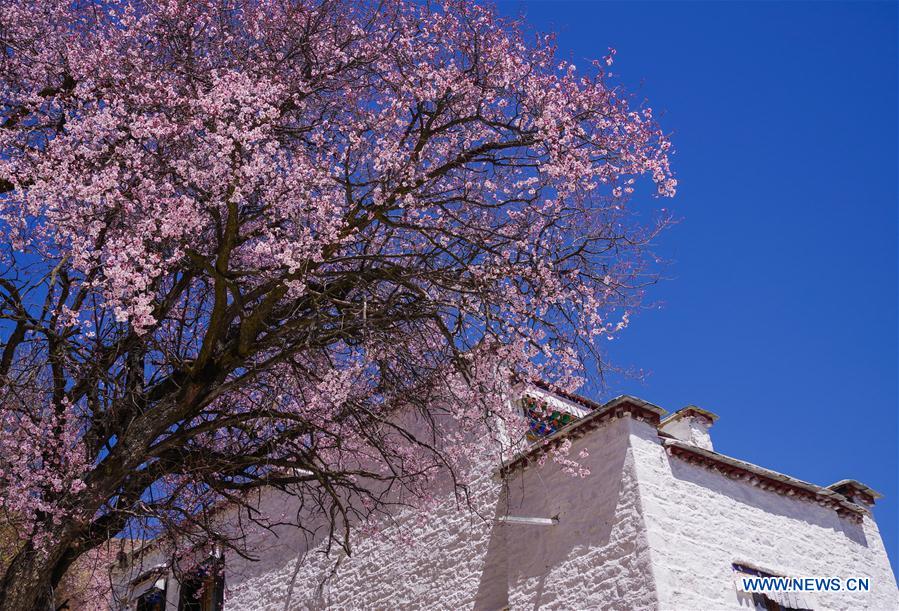
-
Peach blossoms bloom outside Drepung Monastery in
Photo taken on April 3, 2018 shows peach blossoms blooming outside the Drepung Monastery in Lhasa, capital of southwest China's Tibet Autonomous Region.
-

